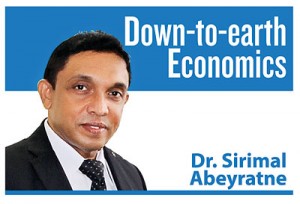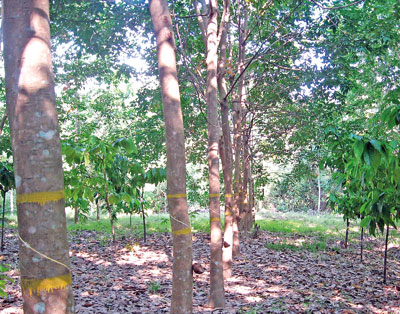Peel more, cry more
View(s):On Thursday September 20, I was at a reception at the Taj Samudra on the occasion of the National Day of Nepal. There were representatives from the diplomatic missions, the government, the business community, and the academia. I was was among them with some of my colleagues.
The Ambassador of Nepal, Prof. Bishwambher Pyakuryal – a close friend of mine for a long time, introduced me to the High Commissioner of South Africa, Ms. Robina Marks.
During our conversation, I asked her: “How long have you been here in Sri Lanka?” She replied: “It has been more than two years now.” Then I said: “It is long enough to know many things about this country; Sri Lanka is very small.” She laughed and responded: “Of course, it is long enough!”
Then I asked again: “So what’s your impression after being here for so long?” She replied: “I think it was like peeling an onion; the more you peel, the greater will be the tears!”
With her kind permission, I quoted the above parts of our informal conversation.
Lost history
The more you study about Sri Lanka – its economics, politics, geography, climate, history, and culture, I am sure the greater will be your sorrow; it’s like peeling an onion.
Thanks to the historical inheritance of the country as such, that has enabled it to stand even today far above many developing countries, what has been lost is not small too!
Today, I thought of peeling a bit of our development history and, let you feel the tears – all with good intentions which I will explain at the end. I will confine myself to some historical evidence from the field of economics. Economics is all about the wellbeing of the people.
Many people used to say that Sri Lanka’s economy at the time of the country’s independence in 1948, was second only to Japan. I want to disclose to you an even more shocking information about the Sri Lankan economy.
Before Independence
When I was searching for Sri Lanka’s pre-independence economic history, I came across the Maddison Research Project carried out by Groningen University in the Netherlands, which has estimated historical per capita GDP statistics for the countries in the world. According to these estimates, Sri Lanka’s per capita GDP appears to be on par with that of Japan during the late 1800s and early 1900s.
What is more surprising is that not many countries in the world provide the necessary evidence to estimate GDP and population statistics during this period; Indonesia, Japan and, Sri Lanka were the three countries in Asia which provided such evidence. However, by the time of independence there were many countries which had surpassed the economic status of Sri Lanka.
At Independence
Besides, even at the time of independence the economic status of the country was outstanding. As the first World Bank mission to Sri Lanka reported it in its publication “The Economic Development of Ceylon” published in 1953: “In the past 75 years the population of Ceylon has trebled. Yet typical living standards, while low in comparison with the West, have been maintained and almost certainly improved; at present they are among the highest in Southern Asia.”
The prosperity that the World Bank mission referred to was based largely on the thriving plantation crops – tea, rubber and coconut. This means that Sri Lanka didn’t have a foreign exchange problem! In fact, the country had a healthy trade surplus in the early 1950s. The fortune of tea, rubber and coconut supported a healthy budget, investment in infrastructure, development of commercial, banking and, international trade as well as the country’s extensive welfare system.
In the words of the then Finance Minister J.R. Jayewardene, Sri Lanka’s record on welfare expenditure “…highly impressed most financial observers from abroad. It stands out in distinct contrast to other countries in South Asia” (Economic and Social Development of Ceylon 1926-1950: A Survey, p.14).
After Independence
The late Prime Minister of Singapore, Lee Kuan Yew who visited Sri Lanka for the first time in 1956 was impressed by what he saw and wrote in his book: “…Ceylon had more resources and better infrastructure than Singapore” (The Singapore Story 1965-2000; p. 460).
In 1960, Sri Lanka’s per capita GDP was US$152 and it was the same in South Korea too. But South Korea continued to raise its per capita GDP reaching over $26,000 now.

File picture of a rubber plantation
Donald Snodgrass, an American economist who did a seminal research at that time on the Sri Lankan economy, published his book under the title “Ceylon: An Export Economy in Transition” in 1966. In this book, he noted something interesting; in good times, Sri Lanka spent lavishly; in bad times, such expenditure was irreversible.
This means that we continued to spend the same with increased borrowings.
Visiting economists
A similar statement, which is actually quite popular among the Sri Lankans, was made by a British Economist Joan Robinson, who visited Sri Lanka in the late 1950s: Sri Lankans eat the fruit without planting the tree!
In fact, she made this remark about Sri Lanka’s “trade unions” which wanted a higher share of capitalist development which was not yet seen at the time. I believe that she herself saw the beginning of trade union rebellions in the second half of the 1950s and, wanted to make a note of it.
It was a decade of “visiting economists” to Sri Lanka, which began with the first World Bank mission in 1951, just a few years after its establishment. Among other economists who visited Sri Lanka in the 1950s were J.R. Hicks, Ursula Hicks, Nicholas Kaldor, Joan Robinson, Oskar Lange, J.K. Galbraith, and Gunnar Myrdal. Most of their writings collected in the publication called “Papers by Visiting Economists” shared the common idea of “higher economic standards” of Sri Lanka at the time.
Tale of missed opportunities
Snodgrass decided to write about Sri Lanka again in 1999. This time he titled his work as “Sri Lanka: a Tale of Missed Opportunities.”
He began by explaining about all good things that Sri Lanka inherited at the time of independence as well as the peaceful transfer of power from colonial rule to independence, and questioned: “What more could a newly independent nation want?”
Then, he explained about how Sri Lanka continued to miss all its opportunities for development and, how other countries which were at the time far behind Sri Lanka continue to advance by eroding their initial advantageous position.
Dissent views
Some might disagree with me: There might be arguments about our developmental achievements as well as our higher status among other developing countries. I agree; but that’s how Sri Lanka started with. From that starting point, how much has Sri Lanka improved over the years?
Many would say that Sri Lanka lost much of its opportunities in the recent past as it was strangled with a war, not just one, but two as one in the North and the other in the South. I agree with that argument too. But the war is over! Did Sri Lanka show significant change in its economic status over the past few years since the end of the war?
Not pessimistic, but realistic
Now many would ask the question “why?” I have a two-word answer: Policies and politics. It all depends on the policies we follow and the politics we play! By saying all the above, I don’t mean to be pessimistic. Rather I wanted to be realistic so that exposing the weakness is a way of showing corrections and directions.
(The writer is a Professor of Economics at the University of Colombo. He can be reached at sirimal@econ.cmb.ac.lk)


